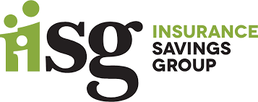ISG Benefits and Insurance Services Blog |
|
Employee benefits are revised continuously to improve yours and your clients’ lives. Take note of these expected changes in 2020: Required Reporting
Medicare Secondary Payer reporting will start to include coverage regarding prescription drugs on January 1, 2020. As of the moment, however, the mentioned procedure is only optional. Third-party administrators and insurance carriers handle this procedure, in which employers should know whom they can inquire for specific information. PCORI Fee Elimination For those with plan years that end before October 1, 2019, employers won’t have to pay for the PCORI fee anymore! However, for plan years ending between October 1, 2018, and December 31, 2018, the last payment for the PCORI fee should already have been made by July 2019. This includes the plan years that began on the first days of November, December, and January. Additionally, other plans will pay their PCORI fee by the end of July 2020. Out-of-Pocket Maximum Increase There will be a 3.20% increase in out-of-pocket-maximums compared to the previous year. Which means family coverage will rise to $16,300 and self-only coverage to $8,150. The Department of Health and Human Services (HSS) has required that individual out-of-pocket maximum (OOPM) will be distributed to every member of the family OOPM. Health Insurance Tax (HIT) Suspended for 2019, HIT has plans on returning in 2020 unless Congress chooses to repeal or delay the pending legislation. According to what actuarial experts say, it will lead to increases in premiums from 2.7% to 4%. Employer Mandate Affordability There will be a 9.78% decrease in the safe harbors’ affordability percentage. Employers should check and evaluate their levels of contribution to ensure they are within the required rate. Individual Mandates in the States An individual mandate has been processed in California and Vermont that will start requiring a completed employer reporting in 2021. States that already have individual mandates, such as New Jersey, will have their employee reporting completed in 2020. Self-Funded Plans Unfortunately, benefits might vary for self-funded employers since it doesn’t subject to annual and lifetime limits. Self-insured employers should start to reassess their state plans and determine which benefits are not subject to annual and lifetime limits. 2020 Employer Mandate Penalties The growth rate of the health insurance premium, as calculated annually by the HSS, is used for adjusting the amount of the mandate penalties of ACA employers. There is news that $2,570 is the employer mandate penalty for (a) and 3,3860 for (b), albeit not settled. There is still plenty of pending legislation that Congress could choose to tackle. Potential issues regarding surprise billing, redefining full-time employees, Cadillac Tax repeal, and prices in prescription drugs can still possibly be addressed.
0 Comments
Leave a Reply. |
Contact UsToll Free: 1-800-220-3304 Archives
March 2021
Categories
All
|


 RSS Feed
RSS Feed